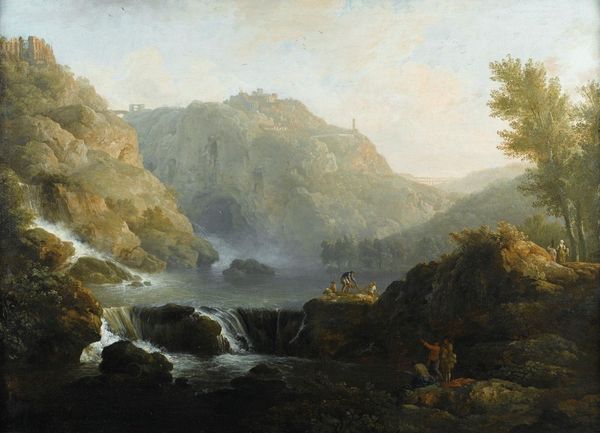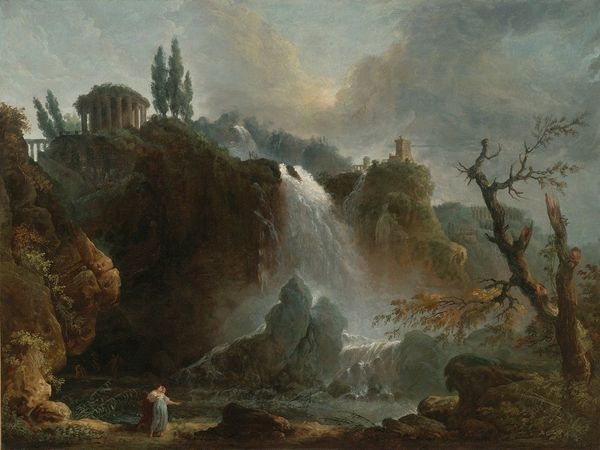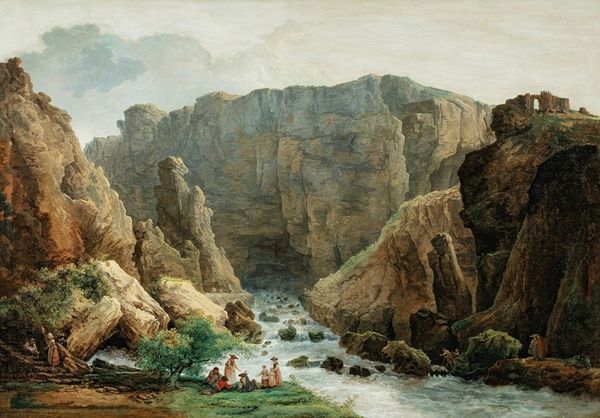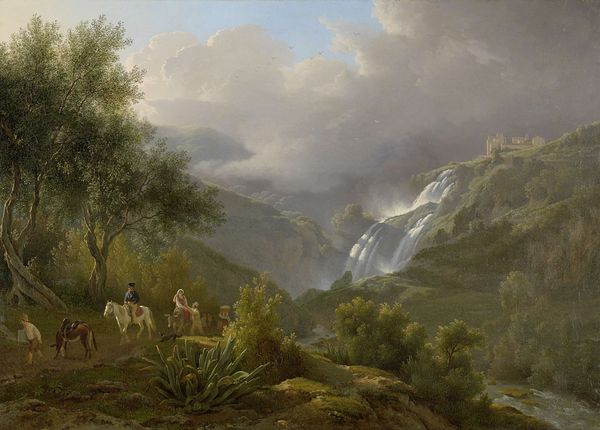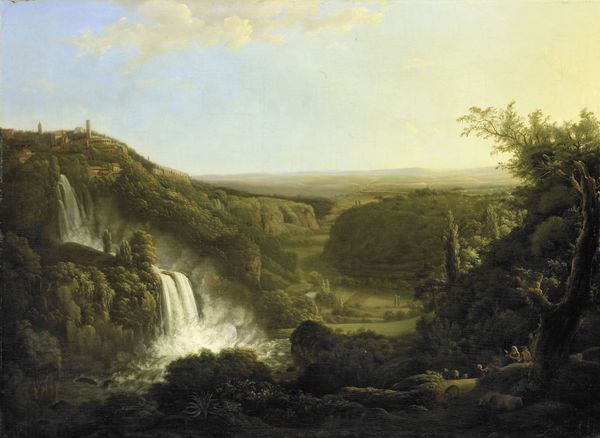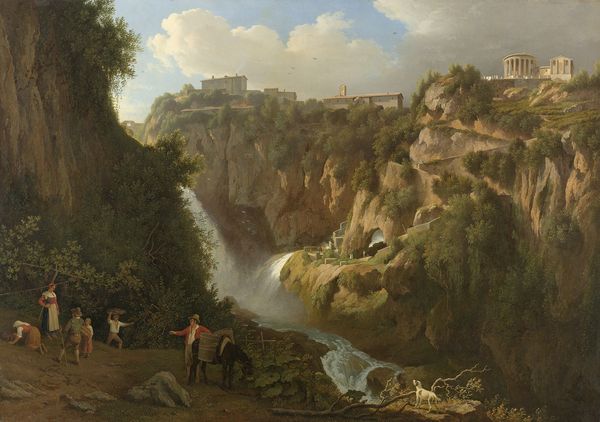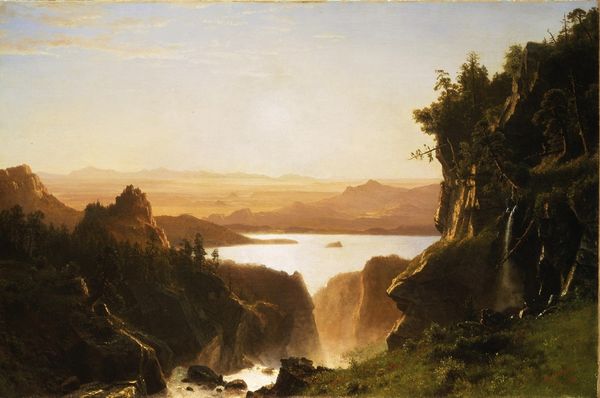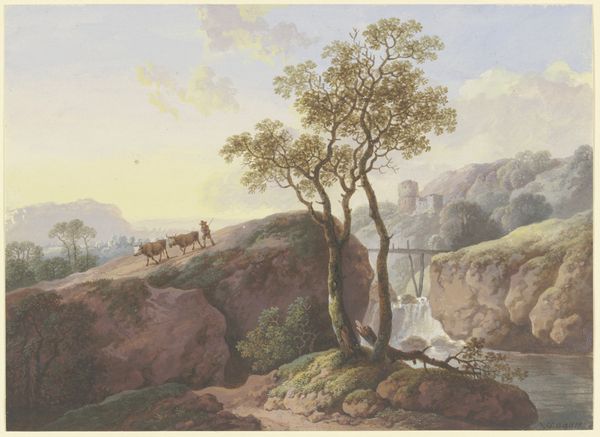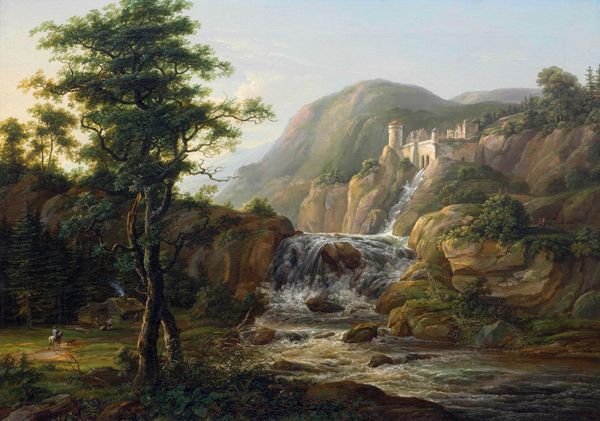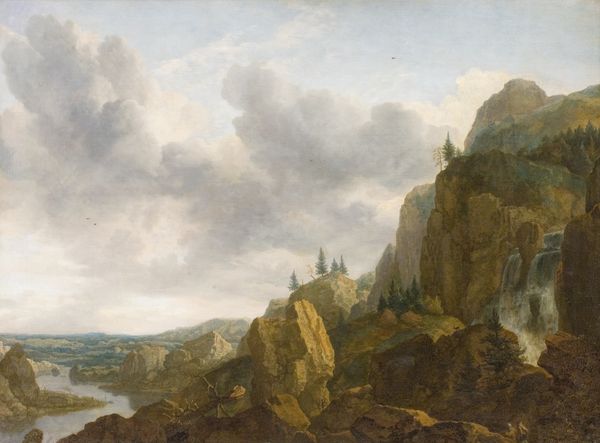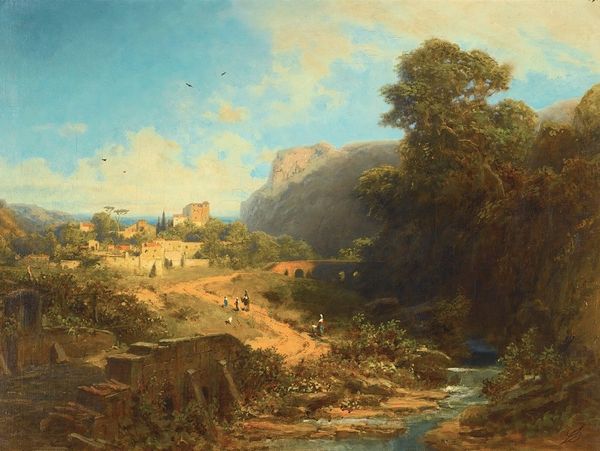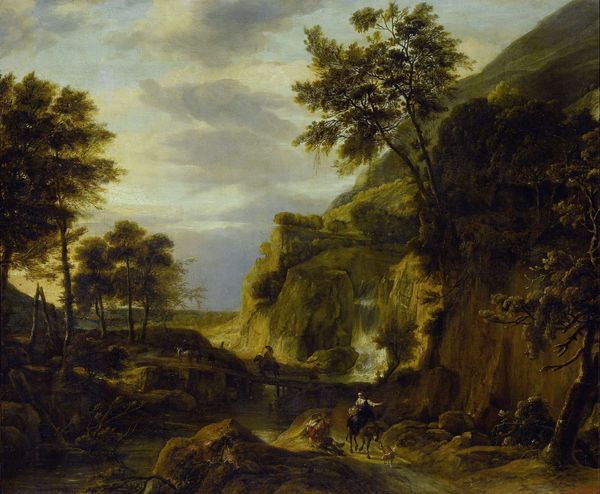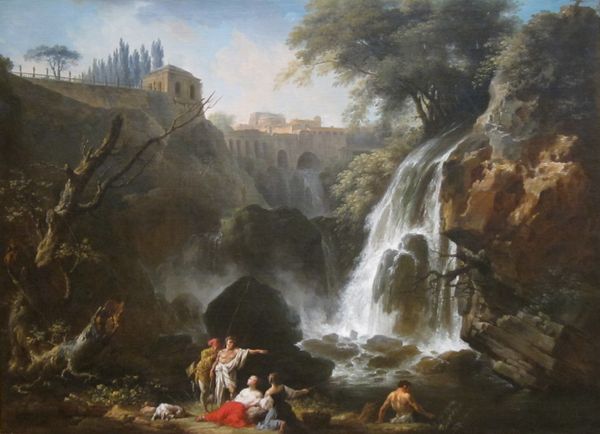
Copyright: Public Domain: Artvee
Editor: Here we have Claude-Joseph Vernet's "The Waterfalls at Tivoli," painted in 1737 using oil. I'm really drawn to how the small figures are dwarfed by the grandeur of the landscape. What strikes you most about this piece? Curator: What's fascinating to me is the *constructed* nature of this wilderness. Vernet wasn’t simply painting a landscape; he was actively participating in a dialogue about nature and culture that was unfolding across 18th-century Europe. What purpose did you think serving portraying the waterfalls? Editor: I suppose it’s a way of glorifying nature and highlighting the insignificance of humans compared to it. Like, wow, nature is awesome, we are not. But isn't that always the message in romanticism? Curator: It's also tied to the growing popularity of the Grand Tour. Tivoli became a must-see destination, and paintings like this served as souvenirs and status symbols. But how do you think this fits within that larger culture? How does it perform for an audience? Editor: That’s an interesting perspective! So it's not just about nature, it is as much about what’s the purpose of seeing and experiencing and owning representations of that scenery. It connects nature with luxury and wealth, I think. Curator: Precisely. It prompts us to consider the relationship between tourism, artistic representation, and the construction of national identity. The very act of painting and viewing becomes entangled with power. Does this make you reflect on it any different way now? Editor: Definitely! It's less about the scene itself, more about how that scene gets packaged and sold and represents different social statuses. Thank you! Curator: Indeed. Now, we can ask what isn't painted to consider all the cultural weight in that image, as well.
Comments
No comments
Be the first to comment and join the conversation on the ultimate creative platform.
